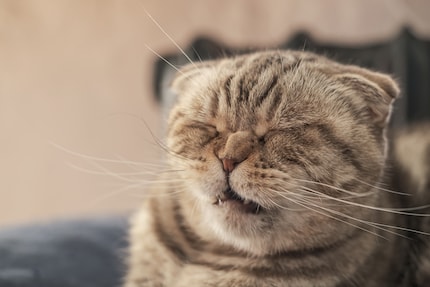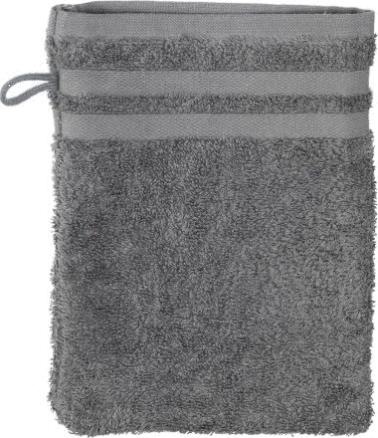

The trouble with grass: when your four-legged friends struggle with pollen
While some people enjoy springtime, others spend it sneezing. This seasonal dilemma doesn’t just affect us humans – cats and dogs can suffer from hay fever too. Read on to find out which breeds are most commonly affected, the unusual ways such an allergy can manifest itself and which tips you can follow to help your pet.
Even if St. Peter’s mood seems to be anything but sunny right now, spring is (meteorologically, at least) well and truly underway. However, it’s not just some of us two-legged creatures who have reason to gripe about the spring blossoms – it’s our four-legged friends too. In addition to losing their fur over spring, some cats and dogs are currently struggling with airborne pollen. Is your pet affected?
Pollen-hating breeds
Like in humans, immune system strength, and with it, susceptibility to hay fever, is genetically determined in quadrupeds. When it comes to dogs, mongrels have most cause for celebration; they’re least likely to get hay fever. Pedigree dogs, however, especially ones with a short snout, are left whimpering more often. The most commonly affected breeds are:
- Boston terriers
- Poodles
- Dalmatians
- Schnauzers
- Westies
- French bulldogs
- Golden retrievers
If my internet research is anything to go by, all cat breeds are equally likely to get hay fever.
Man, that’s itchy
The most common symptom of animal hay fever isn’t sneezing – it’s itching over the entire body. Our furry friends sometimes scratch themselves until their skin becomes inflamed, wounds develop or patches of fur fall out. Dogs often get an itchy face, belly or paws after frolicking in the grass. Other hay fever symptoms in pets include:
- Skin redness
- Bloodshot, watery and/or itchy eyes
- Sneezing
- Respiratory symptoms from heavy breathing to shortness of breath

Source: giphy.com
The culprits
Here are the plants typically to blame for your pets’ suffering:
- Grasses
- Birch
- Oak
- Hazel
- Nettles
What should you do about it?
If you think your pet is suffering from hay fever, it’s worth heading to the vet’s. There, blood and skin tests can be used to rule out other causes and confirm or refute your suspicions. They can also determine which plants are causing your pet’s distress.
Treatments
Once the diagnosis is made, there are several treatment options for cats and dogs.
- Medication: cats and dogs are often treated with cortisone ointments to keep itching at bay. Using them for an extended period, however, can cause fur loss or muscle atrophy in dogs. Only cats can be treated this way without issue.
- Alternative healing methods: this involves treating the allergy with homeopathy or acupuncture.
- Desensitisation: as is the case in humans, quadrupeds can have a desensitisation solution injected under their skin. This involves the vet deliberately administering a very small quantity of pollen until the animal stops having an allergic reaction.

Source: Koldunov Alexey/Shutterstock
The dos and don’ts
To keep your pet as far away from allergy-causing pollens as possible, it’s a good idea to check a pollen calendar to figure out which months are the most pollen-heavy. The time of day also plays a deciding role:
- In the countryside, the pollen count is highest between 4 a.m. and 6 a.m. That means the best time to let your pets out is between 6 p.m. and midnight.
- The exact opposite is the case in cities. Here, you’ll find most pollen in the air between 6 p.m. and midnight, with the 6–8 a.m. window boasting the lowest pollen count. This is because during the day, buildings and roads store heat. Over the course of the night, this heat is slowly released, which spreads pollen.
As for the weather, the best time to take a walk is after a rain shower or when there’s no wind. Strong winds also tend to keep the pollen count low. Gentle gusts, on the other hand, with their ability to whip up pollen, are like poison.
Good hygiene at home is especially useful, with regular vacuuming, using allergy shampoo when giving your pet a bath, and wiping them down with a damp cloth after a walk all proving helpful. Your pet’s favourite cushion should also be replaced, i.e. washed, on a regular basis.
There’s one last thing that needs to be said. If you ever get the chance to relocate to the mountains or the seaside, do it! The pollen count in these areas is supposed to be really low. Plus, St. Peter probably does a better job on the weather front there too. Ah, we selfless creatures will do almost anything for our four-legged friends, won’t we?
Header image: Shutterstock
I love anything with four legs or roots - especially my shelter cats Jasper and Joy and my collection of succulents. My favourite things to do are stalking around with police dogs and cat coiffeurs on reportages or letting sensitive stories flourish in garden brockis and Japanese gardens.
Practical solutions for everyday problems with technology, household hacks and much more.
Show all



